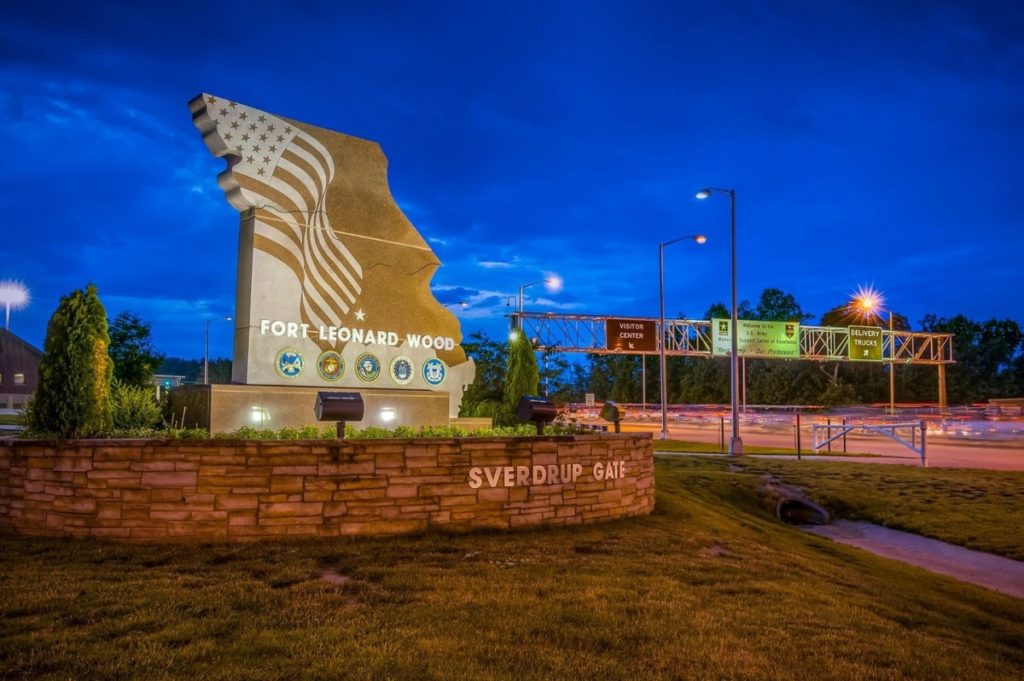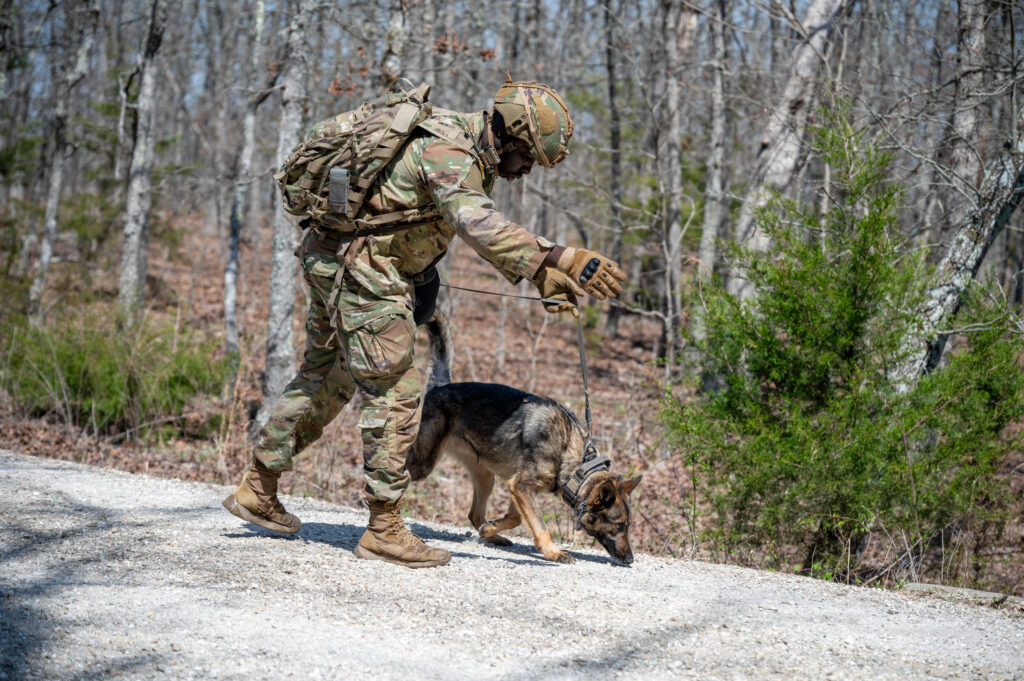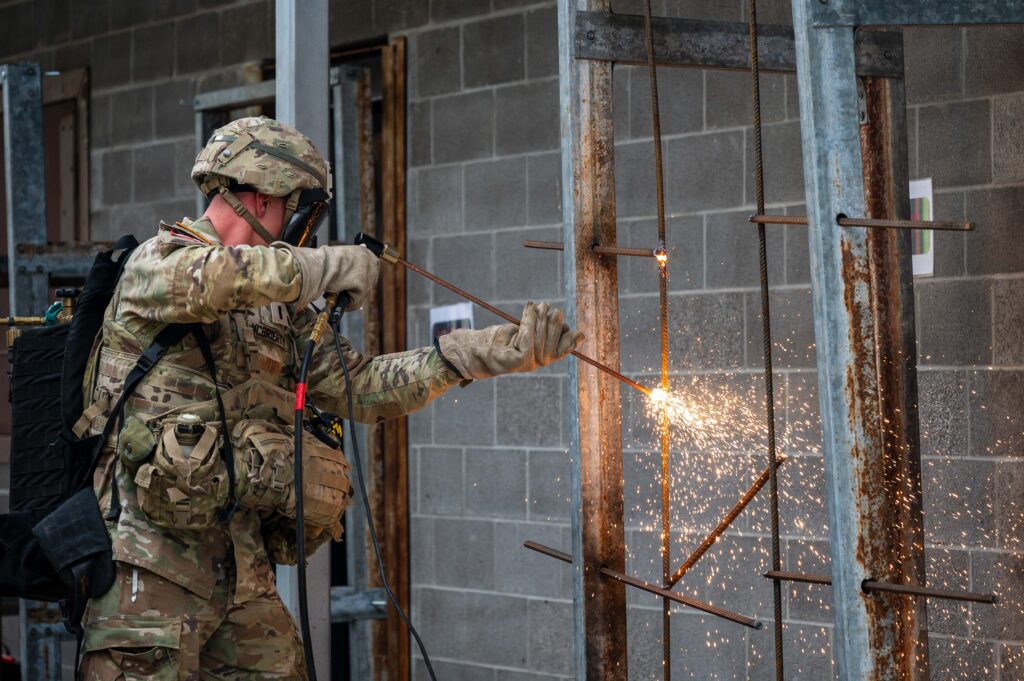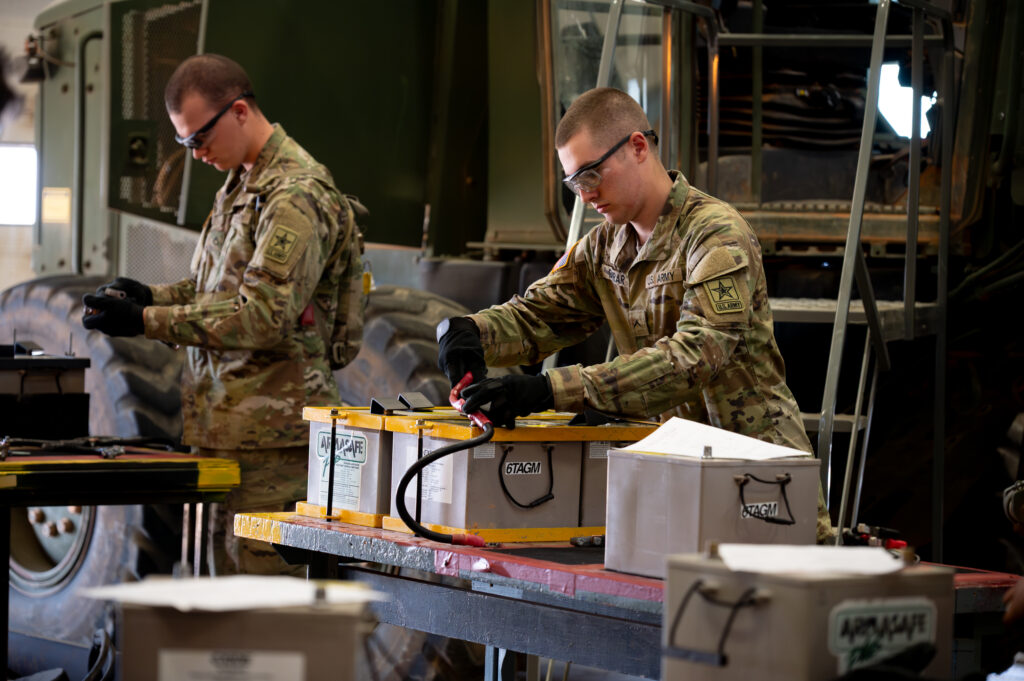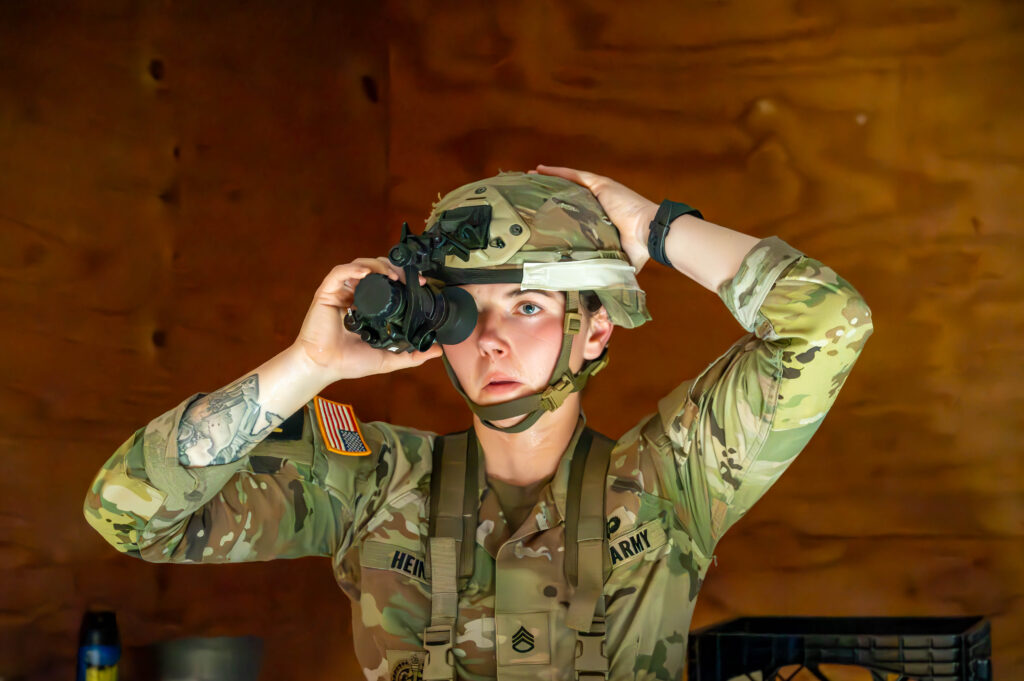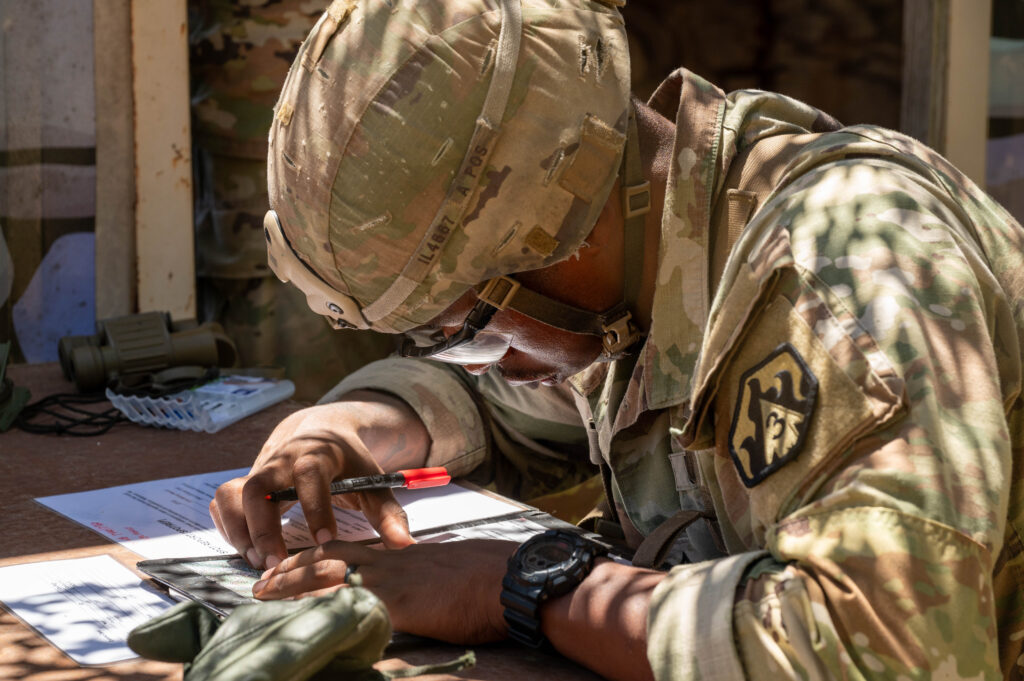Brian Hill
FORT LEONARD WOOD, Mo. (April 20, 2022) Drill sergeants and cadre here work every day to transform groups of civilians into units of professional Soldiers, who perform well as a team to accomplish their missions.
So, when ROTC cadets from the Missouri University of Science and Technology in nearby Rolla, Missouri, qualified to compete at the international Sandhurst Military Skills Competition that takes place later this month at the U.S. Military Academy at West Point, New York, their leaders reached out to training units here for their expertise to help the cadets prepare.
“During their train-up over the past seven months, the Missouri S&T team benefited from the support of a number of units on Fort Leonard Wood,” said Maj. Matt Burmeister, Professor of Military Science at Missouri S&T.
To qualify for Sandhurst, Burmeister said the 12-person team won local and Midwest regional competitions, coming in second out of 41 competing senior ROTC programs. Succeeding at these competitions required the team to demonstrate skills such as rifle marksmanship, land navigation, emergency medical treatment, knot tying, employing radio calls for artillery, and crossing a water obstacle in a watercraft — skills they will also need at Sandhurst.
Two Fort Leonard Wood units that know a lot about crossing water obstacles are the 1st Engineer Brigade’s Bridging Engineer Detachment and the 50th Multi-Role Bridge Company. Soldiers from these units were able to assist the cadets in honing their skills with portable, inflatable boats.
According to 1st Lt. Brandon Dickinson, a 50th MRBC platoon leader, and a 2019 Sandhurst competitor himself, the cadets brought “a good baseline of knowledge” with them when they arrived to train on the boats here.
“Teamwork is essential, from transporting the craft down to the shore, to getting it in the water, to working together on oaring to make sure you’re travelling in the direction you want to go — the foundation lies in teamwork and communication,” he said. “They had one of the cadets who was the squad leader. They were the most vocal out of anybody because they control everything within that craft, from the loading and unloading procedures, to the oaring rhythm in itself. And that’s key, that you have one chief on that craft, that one person who’s in charge, and everyone else is listening and following.”
Dickinson said his biggest takeaway from Sandhurst was the camaraderie, and he wished the cadets the best of luck as they get ready to compete.
“It’s going to be tough — it’s going to be challenging — but you’re going through it with 11 other people,” he said.
Another unit that provided assistance was the 554th Engineer Battalion. Capt. Jacob Savage, executive officer for Company C, 554th Engineer Battalion, aided the cadets with weapons training.
“With how they conducted themselves, and how they performed at the range, I fully expect them to perform (at Sandhurst) splendidly, and possibly even take the winning honors away from the West Point team this year,” he said. “They were easy to work with, and were very responsive to the coaching that the drill sergeants and other cadre gave. Even if it was clear that they were competent marksmen, they were still willing to learn, which is a mindset I’m sure has served them well in their continued training.”
Soldiers from the 554th also invited the cadets to compete alongside them for what’s called the Norwegian Foot March foreign badge. Originating in World War I, the NFM badge was created by the Norwegian Army as it built its conscript military. Today, they use the march to assess a service member’s overall physical fitness while building unit cohesion. Requirements include completion of a 30-kilometer (18.6-mile) march with a minimum 25-pound ruck in a prescribed amount of time, based on age. The NFM badge is one of only a handful of foreign awards authorized for American service members to wear.
12 cadets earned their NFM badge that day, including Eric Alcante, who was enlisted for 11 years and is completing his commissioning requirements via the Army’s Green to Gold Program.
“Having Fort Leonard Wood nearby is a tremendous asset and privilege,” he said. “Being able to utilize the post’s rolling terrain, training areas and having support for any additional training opportunities is a great benefit for our cadets.”
As one of only 16 university Army ROTC teams selected for Sandhurst — out of 274 Army ROTC programs throughout the country — the Missouri S&T cadets will compete against 16 teams fielded by the USMA, in addition to teams from the Air Force, Navy and Coast Guard academies, and 14 international teams from 12 countries. These Fort Leonard Wood training opportunities — along with past competitions — have taught them that team cohesion plays a huge role in performing well, Cadet Emily Chambers said.
“No one individual can win this by themselves, and you’re only as strong as your weakest link,” she said. “Motivating those on your team and keeping morale high is the key to winning.”
Cadet Dale Crosman, the team captain, added that trust in one another has been vital to the team’s success to this point. He does not see that changing when they get to New York.
“Sandhurst has many challenging events we will have to overcome as a team in order to do well,” he said. “You have to work with each other, know each other’s strengths and weaknesses and know how to utilize them. You have to trust each other, to push each other, to have each other’s backs, and to be there for and motivate each other.”
For the Soldiers of the 554th, who volunteered large portions of their weekends to work with the cadets, “they had no idea it was for a competition,” said Lt. Col. John Moran, 554th Engineer Battalion commander.
“They came out to teach their future leaders the fundamentals the right way,” he said. “(The Soldiers) know that this investment of their time will pay big dividends for the Army.”
Moran added that he and his staff — along with the second lieutenants assigned to the battalion while they attend the Engineer Basic Officer Leader Course — enjoyed connecting with the cadets.
“It is a great partnership, where we introduce the cadets to the Engineer Branch while they train on an active Army installation,” he said. “I hope it inspires them on their journey to our ranks. We wish these cadets the best and take pride in knowing that we were one small part of their preparation.”
The Sandhurst Military Skills Competition is scheduled to be held April 29 and 30. Visit West Point’s Sandhurst competition website for more information.

-30-
About Fort Leonard Wood
Fort Leonard Wood is a thriving and prosperous installation that has evolved from a small basic training post 80 years ago to a premier Army Center of Excellence that trains nearly 80,000 military and civilians each year.
Fort Leonard Wood is home to the U.S Army Maneuver Support Center of Excellence and three U.S. Army schools: the U.S. Army Engineer School; U.S. Army Chemical, Biological, Radiological and Nuclear School; and the U.S. Army Military Police School. In addition to training engineer, CBRN and military police specialties for the Army, Fort Leonard Wood also provides gender-integrated in-processing and Basic Combat Training for new Soldiers.
Fort Leonard Wood also hosts and trains with the largest Marine Corps Detachment and Air Force Squadron on any Army installation as well as a large Navy construction detachment.
More information about Fort Leonard Wood is at: https://home.army.mil/wood/index.php/about/mission
